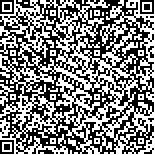| 摘要: |
| [摘要] 目的 分析切脾与未切脾血红蛋白H CS(HbH CS)病患者的血清铁蛋白(SF)及肝铁浓度(LIC)情况,并探讨其关联性。方法 选择该院于2014-07~ 2015-06收治的HbH CS病患者64例,按照是否接受脾切治疗分为切脾组(n=34)和未切脾组(n=30)。比较两组的血红蛋白(Hb)、有核红细胞(NRBC)、网织红细胞(Ret)、白细胞(WBC)和SF水平及肝MRI T2*,并筛查与lnSF(SF的自然对数)及肝MRI T2*具有相关性的指标。结果 切脾组Hb、WBC和NRBC水平均高于未切脾组,差异有统计学意义(P<0.05)。切脾组lnSF和肝MRI T2*水平均显著高于未切脾组(P<0.05),反映切脾组SF水平高于未切脾组,而LIC水平低于未切脾组。切脾组肝MRI T2*与年龄和lnSF呈负相关(P<0.05);lnSF与Hb呈负相关(P<0.05),与年龄、NRBC、WBC及输血级别呈正相关(P<0.05)。未切脾组肝MRI T2*与lnSF呈负相关(P<0.05);lnSF与年龄呈正相关(P<0.05)。结论 肝MRI T2*可反映肝铁负荷情况,HbH CS病患者切脾后SF水平与LIC存在不一致的情况,对于地中海贫血患者的铁负荷评估需综合考虑患者是否已接受了切脾治疗及脏器的铁负荷情况。 |
| 关键词: 血红蛋白H CS病 肝铁浓度 血清铁蛋白 肝磁共振成像T2* 铁负荷 |
| DOI:10.3969/j.issn.1674-3806.2020.09.11 |
| 分类号:R 605 |
| 基金项目:广西卫健委科研课题(编号:Z20190914);柳州市科协软科学研究课题(编号:柳科协软20190105号);柳州市科技计划重点研发项目(编号:2019BC30602) |
|
| Analysis of iron load in splenectomised and non-splenectomised patients with HbH CS disease |
|
NIE Wei-ye, YIN Xiao-lin,YANG Jie, et al.
|
|
Department of Hematology, the Fourth Affiliated Hospital of Guangxi Medical University, Liuzhou 545005, China
|
| Abstract: |
| [Abstract] Objective To analyze the serum ferritin(SF) and liver iron concentration(LIC) in splenectomised and non-splenectomised patients with hemoglobin H Constant Spring(HbH CS) disease, and to explore their correlation. Methods Sixty-four patients with HbH CS disease treated in our hospital from July 2014 to June 2015 were selected and divided into the splenectomy group(n=34) and the non-splenectomy group(n=30) according to whether to receive splenectomy or not. The levels of hemoglobin(Hb), nucleated red blood cells(NRBC), reticulocytes(Ret), white blood cells(WBC) and SF, and hepatic magnetic resonance imaging(MRI) T2* were compared between the two groups. The indicators correlated with lnSF(natural logarithm of SF) and hepatic MRI T2* were screened. Results The levels of Hb, WBC and NRBC in the splenectomy group were significantly higher than those in the non-splenectomy group(P<0.05). The values of lnSF and hepatic MRI T2* in the splenectomy group were significantly higher than those in the non-splenectomy group(P<0.05), reflecting that the level of SF in the splenectomy group was higher than that in the non-splenectomy group, while the level of LIC in the splenectomy group was lower than that in the non-splenectomy group. In the splenectomy group, hepatic MRI T2* was negatively correlated with age and lnSF(P<0.05); lnSF was negatively correlated with Hb(P<0.05), and positively correlated with age, NRBC, WBC, and blood transfusion levels(P<0.05). In the non-splenectomy group, hepatic MRI T2* was negatively correlated with lnSF(P<0.05), and lnSF was positively correlated with age(P<0.05). Conclusion Hepatic MRI T2* can reflect iron load in the liver. Inconsistency between SF level and LIC exists in the patients with HbH CS disease after splenectomy. Evaluation of iron load in the patients with thalassemia requires a comprehensive consideration of whether the patients have received splenectomy and the iron load in the viscera. |
| Key words: Hemoglobin H Constant Spring(HbH CS) disease Liver iron concentration(LIC) Serum ferritin(SF) Hepatic magnetic resonance imaging(MRI) T2* Iron load |

